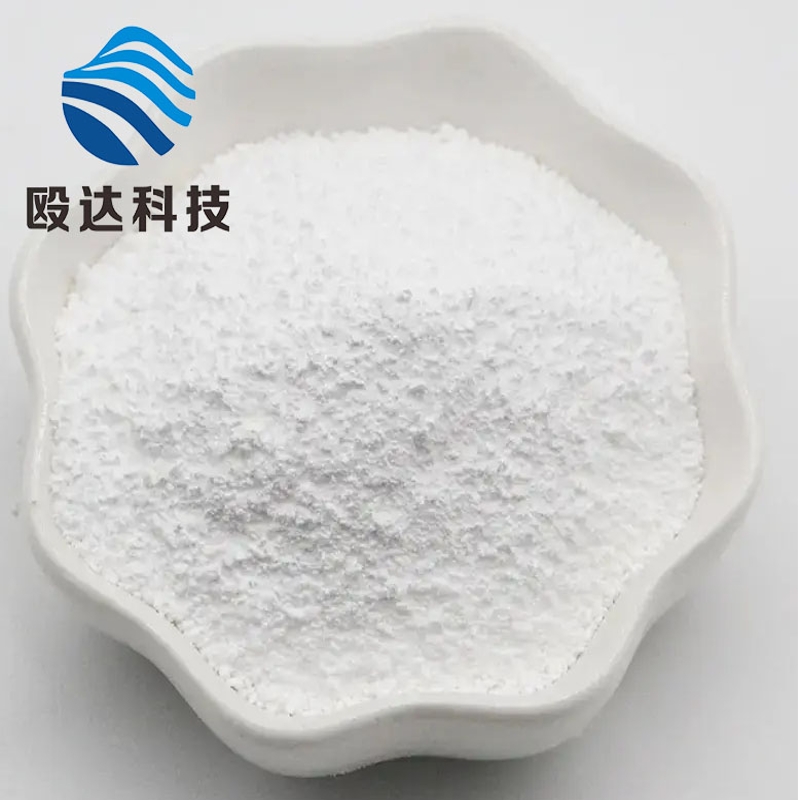-
Categories
-
Pharmaceutical Intermediates
-
Active Pharmaceutical Ingredients
-
Food Additives
- Industrial Coatings
- Agrochemicals
- Dyes and Pigments
- Surfactant
- Flavors and Fragrances
- Chemical Reagents
- Catalyst and Auxiliary
- Natural Products
- Inorganic Chemistry
-
Organic Chemistry
-
Biochemical Engineering
- Analytical Chemistry
- Cosmetic Ingredient
-
Pharmaceutical Intermediates
Promotion
ECHEMI Mall
Wholesale
Weekly Price
Exhibition
News
-
Trade Service
Editor’s note iNature is China’s largest academic official account.
It is jointly created by the doctoral team of Tsinghua University, Harvard University, Chinese Academy of Sciences and other units.
The iNature Talent Official Account is now launched, focusing on talent recruitment, academic progress, scientific research information, and interested parties.
Long press or scan the QR code below to follow us
.
iNature For many people who are related to poor health, inflammatory bowel disease (IBD) is a chronic relapsing disease
.
Although there are some drugs for the treatment of IBD in clinic, it is always necessary to develop effective therapies for patients with IBD
.
On June 16, 2021, Nanjing University Hua Zichun and Zhang Jing jointly published an online publication titled "Phosphatidylserine externalized on the colonic capillaries as a novel pharmacological target for IBD therapy" on Signal Transduction and Targeted Therapy (IF=13.
49).
The research paper showed that externalized phosphatidylserine (PS) was observed on the surface of colonic capillaries
.
Annexin A5 (ANXA5), which has a high affinity for PS, has good targeting properties to the colon and effectively relieves experimental colitis
.
In contrast, the ANXA5 mutant (A5m) lacking PS binding capacity does not accumulate in the colon and has no therapeutic effect on colitis
.
Mechanism studies have shown that ANXA5 reduces inflammatory cell infiltration by inhibiting the activation of endothelial cells that depend on the PS binding ability
.
With increasing PS exposure on activated HUVEC (human umbilical vein endothelial cells), ANXA5 binding induces the internalization of TLR4 through PS-dependent endocytosis
.
This study provides new insights into the molecular mechanism of ANXA5's anti-inflammatory effects
.
The data from this study indicate that PS externalization is a potential target of ANXA5, aimed at targeted drug delivery (TDD) for the treatment of IBD
.
Inflammatory bowel disease (IBD) is a chronic recurrent disease of the gastrointestinal tract.
Its pathological features are intestinal inflammation and epithelial damage, called ulcerative colitis (UC), Crohn's disease (CD) and indeterminate colon Inflammation (IC)
.
The treatment of IBD is based on anti-inflammatory and immunomodulatory drugs to inhibit intestinal inflammation, thereby improving disease-related symptoms
.
Tumor necrosis factor (TNF) blockade is a commonly used clinical standard therapy for IBD, which results in the blockade of pro-inflammatory signals or molecules that are up-regulated by TNF-α2
.
However, long-term use of anti-TNF therapy can have adverse effects, including potential skin damage, immune response, infection, and cancer
.
At present, there are two monoclonal antibody drugs Natalizumab and Vedolizumab for α4 integrin that can be used to treat IBD
.
Continuation of Natalizumab treatment is associated with an increased risk of progressive multifocal leukoencephalopathy (PML)
.
Vedolizumab has good safety, and the incidence of serious infections, infusion-related reactions and malignant tumors is low
.
But for IBD patients, the clinical problems have not been solved yet, and innovative drugs and new treatment strategies need to be developed
.
Targeted drug delivery (TDD) is an effective strategy for treating diseases with minimal side effects
.
In normal cells, phosphatidylserine (PS) is distributed asymmetrically throughout the plasma membrane, only in the inner lobules
.
In compressed or dying cells, the externalization of PS as a fingerprint on the cell surface may be a biomarker indicative of TDD areas
.
For example, antibodies targeting PS can bind to PS exposed on the surface of tumor vascular endothelial cells, thereby achieving antibody-dependent cell-mediated cytotoxicity
.
A chimeric antibody, bavituximab, targets the exposed PS of virus-infected cells and rescues mice from lethal murine cytomegalovirus infection, demonstrating that lateral PS is a therapeutic strategy for viral diseases
.
It is worth noting that Diannexin (a homodimer of ANXA5) has entered clinical trials in kidney transplant patients as a PS targeting agent
.
Potential triggers of PS exposure are external stresses, such as hypoxia, inflammation, and infection
.
Many of these stress sources exist in enteritis, so it is possible that externalized PS may occur in the colon
.
To test this hypothesis, ANXA5 (a Ca2+ and phospholipid binding protein 6) was used for verification
.
With its high affinity for PS, ANXA5 can bind to aging red blood cells, activated platelets, endothelial microparticles and tumor blood vessels to remove PS exposed on its surface
.
In addition, ANXA5 has a potential inhibitory effect on inflammation
.
In vivo, ANXA5 can inhibit inflammation when administered to various mouse models
.
The administration of ANXA5 reduces inflammation and inhibits plaque development in a PS-dependent manner
.
Considering the PS targeting and anti-inflammatory effects of ANXA5, this study explored the possibility of ANXA5 as a PS targeting agent in the treatment of IBD
.
In this study, the study proved that externalized PS is indeed exposed on the vascular endothelium of colonic capillaries
.
ANXA5 effectively alleviates TNBS-induced colitis by inhibiting inflammatory cell infiltration
.
The findings of this study indicate that ANXA5 is targeted to deliver PS to colonic capillaries, which has potential application value in the treatment of IBD
.
Reference message: https://
It is jointly created by the doctoral team of Tsinghua University, Harvard University, Chinese Academy of Sciences and other units.
The iNature Talent Official Account is now launched, focusing on talent recruitment, academic progress, scientific research information, and interested parties.
Long press or scan the QR code below to follow us
.
iNature For many people who are related to poor health, inflammatory bowel disease (IBD) is a chronic relapsing disease
.
Although there are some drugs for the treatment of IBD in clinic, it is always necessary to develop effective therapies for patients with IBD
.
On June 16, 2021, Nanjing University Hua Zichun and Zhang Jing jointly published an online publication titled "Phosphatidylserine externalized on the colonic capillaries as a novel pharmacological target for IBD therapy" on Signal Transduction and Targeted Therapy (IF=13.
49).
The research paper showed that externalized phosphatidylserine (PS) was observed on the surface of colonic capillaries
.
Annexin A5 (ANXA5), which has a high affinity for PS, has good targeting properties to the colon and effectively relieves experimental colitis
.
In contrast, the ANXA5 mutant (A5m) lacking PS binding capacity does not accumulate in the colon and has no therapeutic effect on colitis
.
Mechanism studies have shown that ANXA5 reduces inflammatory cell infiltration by inhibiting the activation of endothelial cells that depend on the PS binding ability
.
With increasing PS exposure on activated HUVEC (human umbilical vein endothelial cells), ANXA5 binding induces the internalization of TLR4 through PS-dependent endocytosis
.
This study provides new insights into the molecular mechanism of ANXA5's anti-inflammatory effects
.
The data from this study indicate that PS externalization is a potential target of ANXA5, aimed at targeted drug delivery (TDD) for the treatment of IBD
.
Inflammatory bowel disease (IBD) is a chronic recurrent disease of the gastrointestinal tract.
Its pathological features are intestinal inflammation and epithelial damage, called ulcerative colitis (UC), Crohn's disease (CD) and indeterminate colon Inflammation (IC)
.
The treatment of IBD is based on anti-inflammatory and immunomodulatory drugs to inhibit intestinal inflammation, thereby improving disease-related symptoms
.
Tumor necrosis factor (TNF) blockade is a commonly used clinical standard therapy for IBD, which results in the blockade of pro-inflammatory signals or molecules that are up-regulated by TNF-α2
.
However, long-term use of anti-TNF therapy can have adverse effects, including potential skin damage, immune response, infection, and cancer
.
At present, there are two monoclonal antibody drugs Natalizumab and Vedolizumab for α4 integrin that can be used to treat IBD
.
Continuation of Natalizumab treatment is associated with an increased risk of progressive multifocal leukoencephalopathy (PML)
.
Vedolizumab has good safety, and the incidence of serious infections, infusion-related reactions and malignant tumors is low
.
But for IBD patients, the clinical problems have not been solved yet, and innovative drugs and new treatment strategies need to be developed
.
Targeted drug delivery (TDD) is an effective strategy for treating diseases with minimal side effects
.
In normal cells, phosphatidylserine (PS) is distributed asymmetrically throughout the plasma membrane, only in the inner lobules
.
In compressed or dying cells, the externalization of PS as a fingerprint on the cell surface may be a biomarker indicative of TDD areas
.
For example, antibodies targeting PS can bind to PS exposed on the surface of tumor vascular endothelial cells, thereby achieving antibody-dependent cell-mediated cytotoxicity
.
A chimeric antibody, bavituximab, targets the exposed PS of virus-infected cells and rescues mice from lethal murine cytomegalovirus infection, demonstrating that lateral PS is a therapeutic strategy for viral diseases
.
It is worth noting that Diannexin (a homodimer of ANXA5) has entered clinical trials in kidney transplant patients as a PS targeting agent
.
Potential triggers of PS exposure are external stresses, such as hypoxia, inflammation, and infection
.
Many of these stress sources exist in enteritis, so it is possible that externalized PS may occur in the colon
.
To test this hypothesis, ANXA5 (a Ca2+ and phospholipid binding protein 6) was used for verification
.
With its high affinity for PS, ANXA5 can bind to aging red blood cells, activated platelets, endothelial microparticles and tumor blood vessels to remove PS exposed on its surface
.
In addition, ANXA5 has a potential inhibitory effect on inflammation
.
In vivo, ANXA5 can inhibit inflammation when administered to various mouse models
.
The administration of ANXA5 reduces inflammation and inhibits plaque development in a PS-dependent manner
.
Considering the PS targeting and anti-inflammatory effects of ANXA5, this study explored the possibility of ANXA5 as a PS targeting agent in the treatment of IBD
.
In this study, the study proved that externalized PS is indeed exposed on the vascular endothelium of colonic capillaries
.
ANXA5 effectively alleviates TNBS-induced colitis by inhibiting inflammatory cell infiltration
.
The findings of this study indicate that ANXA5 is targeted to deliver PS to colonic capillaries, which has potential application value in the treatment of IBD
.
Reference message: https://







